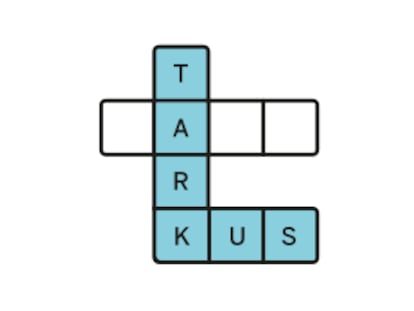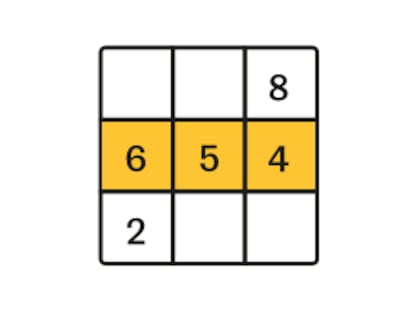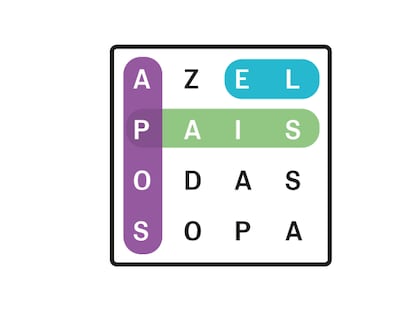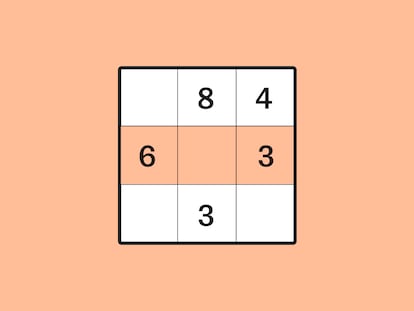Intermittent fasting is moderately more effective than traditional dieting, study finds
New research shows that this method leads to greater weight loss and improved metabolism. Possible rebound effects were not analyzed

It’s not just how much you eat that matters, but when you eat it. This is what social media started saying some time ago, and some scientific studies are beginning to confirm it. The idea is crystallizing in a new dietary approach: intermittent fasting. There is some controversy and conflicting opinions about this new technique within the scientific community. The information available is interesting, but insufficient. A new study, published on Monday in the Annals of Internal Medicine, has added something further by showing that this method is moderately more effective than traditional calorie restriction for weight loss.
Researchers at the University of Colorado School of Medicine randomly assigned 165 overweight or obese adults to either 4:3 intermittent fasting or calorie restriction for 12 months to compare weight loss. Fasting involved 80% energy restriction for three nonconsecutive days per week. On the remaining four days, participants ate freely, although they were encouraged to make healthy food choices. Participants in the classic diet group were given a daily calorie goal designed to produce a 34.3% energy deficit. This way, at the end of the week, everyone would have consumed the same number of calories, so they should lose the same amount of weight.
But that wasn’t the case. At 12 months, participants in the intermittent fasting group had a 7.6% reduction in body weight. The calorie restriction group reported an average loss of 5%. The difference is “modest” but evident, and is underscored by other data. Participants in the fasting group also achieved more favorable cardiometabolic indicators, including blood pressure, total cholesterol levels, and fasting glucose levels.
“Our hypothesis is that the 4:3 strategy was easier to adhere to because it involved counting calories and restricting them only three days a week, whereas the dieters had to count calories and restrict them every day,” explains Victoria Catenacci, an endocrinologist and lead author of the study, in a message exchange. “Counting calories can be cognitively burdensome, and having to do it only three days a week may have made it easier to adhere to over time.”
“This isn’t a magical property of the 4:3 approach per se, but rather because they achieved a greater calorie deficit,” says Adam Collins, professor of nutrition at the University of Surrey, speaking to the science website Science Media Center (SMC). In theory, everyone ingested the same number of calories, but the expert points out that there are clues to the contrary, both in what was measured and what wasn’t. “Those assigned to the 4:3 diet were only asked to record their intake on fasting days, but we know that some people tend to eat less on non-fasting days as well, even if they don’t realize it. Therefore, measuring intake only on fasting days may underestimate actual intake,” he believes. Conversely, adherence to continuous calorie restriction (i.e., every day) can be variable. It’s easier to deceive yourself when measuring calories than when fasting, where there’s no deception possible.
In recent months, several trials have been published comparing other intermittent fasting paradigms with traditional diets, with no significant differences noted. “We were a little surprised to see that our data didn’t match these studies,” says epidemiologist Danielle Ostendorf, who also participated in the research. “We think this is due to the intermittent fasting paradigm we chose to study. Fasting three days a week might be a kind of sweet spot for intermittent fasting, while other paradigms were probably too rigid and difficult to adhere to.”
Despite the growing popularity of intermittent fasting, few trials have compared its long-term results with those of calorie restriction in overweight or obese adults. This study, funded by the now-threatened National Institutes of Health (NIH), sheds some light, demonstrating greater adherence, although it should be emphasized that the number of participants is not very large nor is the difference in weight loss very significant, considering that it is a 12-month trial. “But one of the most interesting features of intermittent fasting is the independent metabolic benefits it can provide,” Collins clarifies. Studies in animal models offer very positive results, and some molecular analyses in humans show how fasting promotes the production of proteins with protective effects against some metabolic or brain diseases.
But, as the authors point out in their study, this time they focused on weight loss. They also warn that these results may provide clues, but cannot be extrapolated to the entire population, as they “may vary depending on sex, age, ethnic origin, disease status, or underlying eating disorders or behaviors.” Intermittent fasting, in general, may be suitable for weight loss, but if you want specific results, it’s best to seek personalized solutions.
Sign up for our weekly newsletter to get more English-language news coverage from EL PAÍS USA Edition
Tu suscripción se está usando en otro dispositivo
¿Quieres añadir otro usuario a tu suscripción?
Si continúas leyendo en este dispositivo, no se podrá leer en el otro.
FlechaTu suscripción se está usando en otro dispositivo y solo puedes acceder a EL PAÍS desde un dispositivo a la vez.
Si quieres compartir tu cuenta, cambia tu suscripción a la modalidad Premium, así podrás añadir otro usuario. Cada uno accederá con su propia cuenta de email, lo que os permitirá personalizar vuestra experiencia en EL PAÍS.
¿Tienes una suscripción de empresa? Accede aquí para contratar más cuentas.
En el caso de no saber quién está usando tu cuenta, te recomendamos cambiar tu contraseña aquí.
Si decides continuar compartiendo tu cuenta, este mensaje se mostrará en tu dispositivo y en el de la otra persona que está usando tu cuenta de forma indefinida, afectando a tu experiencia de lectura. Puedes consultar aquí los términos y condiciones de la suscripción digital.
More information
Archived In
Últimas noticias
The new language of the workplace: Knowing how to ask AI questions is more important than using it
Christmas loses its festive spirit: ICE fears cast shadow over religious celebrations
‘Sleepless City’: The light of cinema illuminates Madrid’s Cañada Real shantytown
All the effects of gentrification in one corner of Mexico’s Colonia Roma
Most viewed
- The low-cost creative revolution: How technology is making art accessible to everyone
- Christian Louboutin: ‘Young people don’t want to be like their parents. And if their parents wear sneakers, they’re going to look for something else’
- US sanctions against jailed cartel leader ‘El Marro’ highlight Mexico’s lack of control over its prisons
- Liset Menéndez de la Prida, neuroscientist: ‘It’s not normal to constantly seek pleasure; it’s important to be bored, to be calm’
- Cartels in Mexico take a leap forward with narco-drones: ‘It is criminal groups that are leading the innovation race’











































